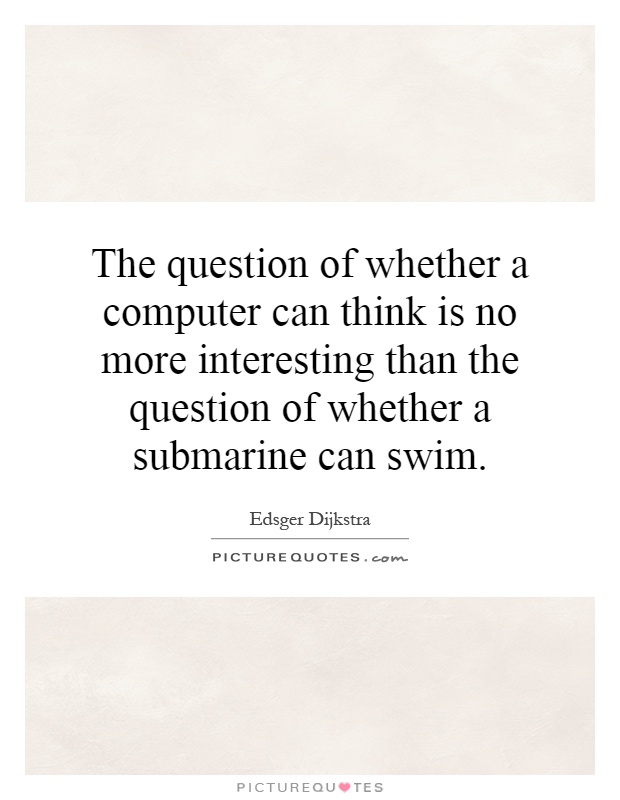The question of whether a computer can think is no more interesting than the question of whether a submarine can swim

The question of whether a computer can think is no more interesting than the question of whether a submarine can swim
Edsger Dijkstra, a renowned computer scientist and pioneer in the field of computer science, once famously stated, "The question of whether a computer can think is no more interesting than the question of whether a submarine can swim." This statement encapsulates Dijkstra's skepticism towards the idea of artificial intelligence and the ability of computers to truly mimic human thought processes.Dijkstra's perspective on this matter can be traced back to his fundamental belief in the distinction between human intelligence and machine intelligence. He argued that while computers are capable of performing complex calculations and executing tasks with incredible speed and accuracy, they lack the inherent consciousness and self-awareness that define human cognition. In other words, Dijkstra believed that computers are fundamentally different from humans in terms of their ability to think and reason.
Furthermore, Dijkstra's analogy of a submarine swimming serves to highlight the limitations of comparing the capabilities of machines to those of living organisms. Just as a submarine is designed to navigate underwater environments using mechanical systems, a computer is designed to process information and perform tasks based on pre-programmed algorithms. While both machines and living organisms can exhibit behaviors that resemble swimming or thinking, the underlying mechanisms and processes involved are fundamentally different.












 Friendship Quotes
Friendship Quotes Love Quotes
Love Quotes Life Quotes
Life Quotes Funny Quotes
Funny Quotes Motivational Quotes
Motivational Quotes Inspirational Quotes
Inspirational Quotes